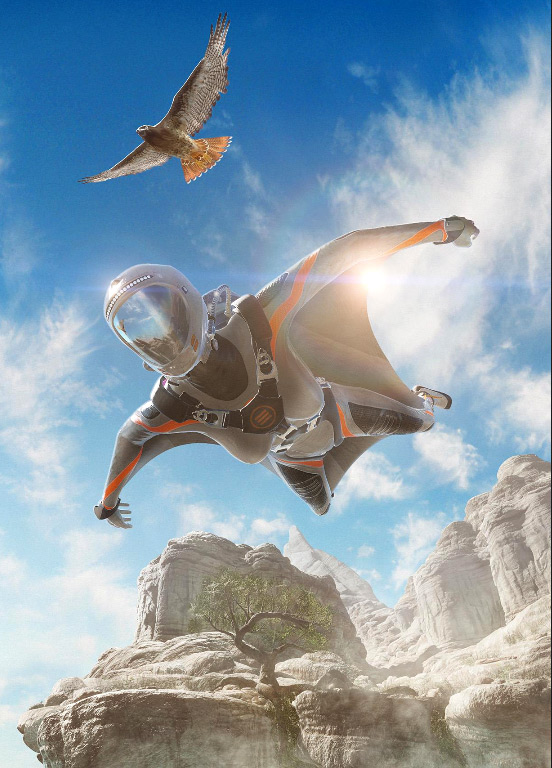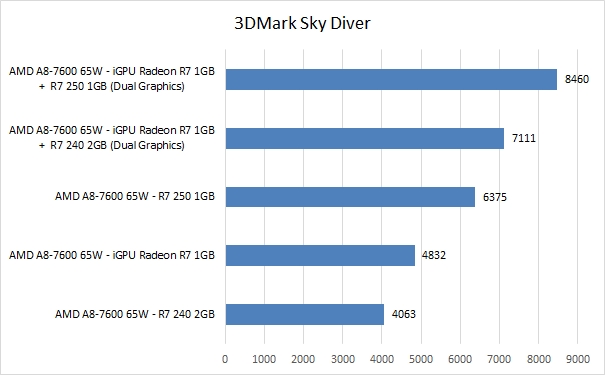
Review: Sky is the limit
Futuremark released an updated version of the 3DMark benchmark (version 1.3.708) for DirectX 11 systems that includes a new benchmark called Sky Diver which we had a look at this week.
The new Sky Diver benchmark is available as free update for all 3DMark owners. It is kept free through sponsorships or new users. And for a limited time, you can buy the 3DMark Advanced Edition, which includes more tests, custom settings and other features, from Steam for only $9.99 (normally $24.99).

The Sky Diver is a new DirectX 11 benchmark test for gaming laptops and mid-range PCs. It's ideal for testing mainstream graphics cards, mobile GPUs, integrated graphics and other systems that cannot achieve double-digit frame rates in the more demanding Fire Strike test. Fire Strike is a like testing a system with a modern DirectX 11 game on ultra-high settings, while Sky Diver tests a game on normal settings at 1080p.
Before we jump to test results here are some details about different tests included within the Sky Diver benchmark. Sky Diver includes a Demo, two graphics tests, a physics test and a combined test. The graphics tests measure the GPU performance, the physics test measures CPU performance, and the combined test stresses both GPU and CPU. The Demo does not affect the score.
Graphics test 1 focuses on tessellation and uses a forward lighting method with one shadow casting directional light. The test utilizes a depth of field post processing effect, which is not used in the other tests.

Graphics test 2 focuses on pixel processing and uses compute shader-based deferred tiled lighting method with screen space ambient occlusion. Post processing creates a lens reflection effect, which is not used in Graphics test 1.

Physics test benchmarks the hardware’s ability to run gameplay physics simulations on the CPU. The GPU load is kept as low as possible to ensure that only the CPU is stressed. The test uses the Bullet Open Source Physics Library.
The physics test introduces a new approach that extends the performance range for which the test is relevant. The test runs through four levels of work starting with the lightest and continuing to the heaviest unless the frame rate drops below a minimum threshold. The score is calculated from the last two completed levels.
The Combined test contains both graphics workloads and physics simulations to stress the CPU and GPU. The test uses a compute shader-based deferred tiled lighting method.
We put some midrange and entry-level graphics cards to see how much they can score in Sky Driver benchmark. Please note that Sky Diver and Fire Strike scores are not comparable.
Futuremark provided a general guide which says:
- If a system scores less than 2800 in Fire Strike you should run Sky Diver.
- If a system scores more than 12000 in Sky Diver, you should run Fire Strike.
According to aforementioned instructions, configurations that we have tested are better suited for the Sky Drive benchmark. 
Dual graphics (Crossfire) scaling in Sky Diver benchmark is good, and we see 47% and 75% improvements after adding discrete R7 240 and R7 250 respectively.



